Reviews 14 min read
2018 Jaguar I-PACE
A brave new world for Jaguar
Jaguar’s first electric car has set a new benchmark for emission-free luxury SUVs, but what is the I-PACE like to live with?
Discover EV expert verdict...
- Impressive performance
- Distinctive looks and roomy interior
- Impressive range
- Firm ride
- Overly complex infotainment
- Lack of rapid charging points
At first glance
Having picked up a total of 54 major global awards and generally revered by the world’s top motoring press, to say that we were excited about Jaguar loaning Discover EV an I-PACE for six days would be an understatement. As Europe’s first entry into the luxury electric SUV club the I-PACE is a courageous project. Delivering almost the same torque as the F-TYPE SVR’s supercharged V8, while boasting a range of up to 292 miles (WLTP cycle) with owners able to achieve 0-80 per cent battery charge in just 40 minutes using DC rapid charging (100kW), would it live up to our expectations? We took it on a road trip to south east England to find out.
The only real way to discover if a car lives up to its claims is to spend some time with it. So, I decided to take my husband and two-year-old son on a long weekend to Devon. Of course, the first thing we did when it arrived on the back of a trailer (to ensure we had the maximum range) was to take it out on a bit of a B-road blast.
First impressions… It’s stupidly quick. It takes 4.8 seconds to reach 62mph, but because the torque (all 512lb-ft of it) is delivered from zero rpm it feels quicker than the figures suggest. 400hp is nothing to be sniffed at either. The impressive performance is all down to two Jaguar-designed electric motors placed on each axle, which are controlled independently to adapt front-rear balance to suit road conditions. Unfortunately the I-PACE felt very unsettled over bumps and ruts in the road, but being a HSE it had 20 inch wheels which probably didn’t help, plus our test car wasn’t spec’d with optional air suspension, and from what we’ve read this seems to make a huge difference to the handling. That said it certainly felt more car-like to drive with its relatively low seating position despite being SUV-sized. The only other gripe we had was the Touch Pro Duo infotainment system wasn’t the most intuitive right off the bat, but perhaps after spending more time with the car we would get to like it.
Having both had a bit of fun, taken the father-in-law out for a blast and then done the obligatory weekly supermarket run we had somehow used 112 miles of range but barely covered 30. There was no way we would make the 193 mile trip to our end destination in Honiton from where we’re based in Kent. Experience has told us that real world driving range is a little different to what manufacturer’s get under controlled laboratory-based conditions, so we scheduled in a stop at Fleet Services South on the M3. Had we not had a (most untimely and unusual) six hour long power cut that night, we could have topped it up.
As stated 0-80 per cent battery charge can be achieved in 40 minutes using DC rapid charging (100kW), but in all honestly these are few and far between, on the road you’re more likely to come across 50kW chargers, which take 85 minutes. If you can support an AC 7kW wall box at home, you will achieve the same state of charge in just over ten hours. We can’t, and as we were to find out during our last few days with the car, charging it overnight via a three-pin domestic socket only gave us 120 miles range.
A dose of range anxiety
The following day, having packed up the car, the 656 litre boot more than adequate for our needs, we were ready to set off. The first part of the journey was mainly motorways, and the advanced double wishbone front and Integral Iink rear suspension provided exceptional ride comfort. That instantaneous performance, regardless of what speed you’re doing, combined with impeccable road manners made it a joy to drive. However, once again it soon became clear that the available range on the trip computer was falling faster than we were covering ground, so we resorted to driving it more like a Smart Fortwo than the sports car it claims to be.
When we arrive at Fleet we have covered 105 miles, and have just 42 miles left on the trip computer. There were only two suitable types of connector available, and fortunately for us a BMW i3 had literally just finished charging when we pull up. A coffee and a bucket of chicken later and we’re ready to go. After charging for 40 minutes we now had a range of 202 miles at a cost of £7.30, which in theory meant we had 75 miles to play with given our destination was 127 miles away.
With 60 miles to go until we reached Gittisham, near Honiton, the Jag’s trip computer was telling us we had 100 miles of range left. Given how quickly we were dropping miles, we decided to switch everything off and put it in Eco setting, with the maximum regenerative effect engaged via the infotainment system. I was pretty confident we would make it, but looking at the Zap-Map app things looked a bit bleak in the area, telling us that the nearest charging points were only 3Kw and we didn’t have a whole day to spare. It’s fair to say my husband was finding the last leg of the journey very stressful.
We reached our end location with a slightly worrying 29 mile range, and at this point we were feeling relieved that we had the foresight to book a hotel with several Tesla Type 2 charging points which fitted the I-PACE. Rated at 22kW however we were unable to get a full charge overnight but more than enough to cover a few days of sightseeing, making a few diversions for video and photography. With 230 miles of range, when we left for our return journey home we only had to stop once, again for 40 minutes. This time the charging bay was empty but there was a van parked in the way (which made a change, normally you’ll find an EV or plug-in hybrid parked up but not charging as if the owners think it’s a dedicated parking bay). When we informed the petrol pump assistance and asked her to request said van owner to move it, her frustrated reply was, “not again”. The charger was rated at 50kw but was only charging at 35kw. That said we managed to get home, with around 30 miles to spare again.
What have we learnt?
What’s important to state here is that this isn’t a car to send you into panic mode within 30 minutes of getting in it, but if you are going to cover a distance of a few hundred miles, it’s probably best you drive it in a conserved manner and meticulously plan ahead making a note of where to recharge. Be mindful that chargers may be in use, or not actually working, and load your phone with apps and contact numbers from a range of networks rather than just relying on Zap-Map. The need for planning will lessen as the infrastructure improves.
We also learnt that motorways, A-roads, urban traffic and country lanes all make a big difference to how efficient the car is. Cruising on the motorway, really takes its toll on the driving range, it’s actually better suited to country lanes, which involves a lot more regeneration. Talking of which, once we discovered the ‘high’ regenerative mode for the braking system, we left it in that setting. The I-PACE’s regenerative braking can produce up to 0.4G of braking force and while it’s odd at first slowing down a car by releasing the accelerator, you soon get used to it. In fact, once you’ve mastered how to control the speed of the car in this way, you barely have to even use the brake pedal, and anticipating road conditions to maintain momentum is fantastic for preserving the battery’s range.
It’s also temperature dependent, in that it can affect how much electricity you can store and also how much you have available. While the 90kWh Lithium-ion battery has been tested under extreme climatic conditions and able to operate from minus 40°C (10°C colder than conventional EVs) its optimum operating temperature is between 20 to 25°C. The car does have a battery pre-conditioning system, which means when plugged in the I-PACE will automatically raise (or lower) the temperature of its battery to maximise range ahead of driving away, but it’s actually better to charge just before your journey with the car cold, and then warm the car with pre-conditioning to get more out of the battery. This is partly why after a night charging at the Pig Hotel at Combe it said it was 100 per cent charged yet had a range of 230 miles.
The range display can be personalised to each individual driver using Jaguar’s Smart Settings feature, which is driven by artificial intelligence algorithms, and can show the driver how much energy systems such as climate control or heated seats are using – and how much range could be gained by switching them off. It can also learn from the driver and ensure their preferred settings are ready every time they get behind the wheel. If you can find it, it is literally buried in the infotainment system like a lot of handy features, it’s pretty cool. There’s also a graphic which rates your use of accelerator, speed and brakes, and marks you out of five, and over time we found it very easy to reach a top score. In six days we covered around 550 miles and spent roughly £30.
Getting under the skin
Over our time with the Jaguar I-PACE we really got to know it. Having initially been disappointed by the way it handled on Kent’s twisty back roads, after finding some almost billiard-table smooth county lanes in Devon, the car felt so much more controlled. It was now, we were starting to see the benefits of Jaguar placing its battery centrally between the two axles, and as low down as possible for 50:50 weight distribution and a low centre of gravity. On perfect tarmac roads, it felt very dynamic, it’s only when the road surface became uneven that the I-PACE bounced and swayed, as it found it trickier to control its 2.1 tonne mass. Putting it in Dynamic mode helped to tighten up body control somewhat and added weight to the steering, but encountering a series of bumps mid-corner still upset it. While it’s light, stiff aluminium EV architecture means it delivers the highest torsional rigidity of any Jaguar, it also translates to an overly stiff ride at times, but as a driver-focused EV it’s much better than the Tesla Model S.
In fact, there’s nothing else on the road that drives or even looks like the Jaguar I-PACE. Without the need for a traditional combustion engine, designers have had more of a free reign. As such it’s afforded a compact front-end design, and together with the coupe-like aero-enhanced roofline, and curved rear screen, you can see how it was influenced by the Jaguar C-X75 supercar. The cab-forward design and squared-off rear helps reduce the drag coefficient to just 0.29Cd, while in terms of cooling Active Vanes in the grille open when required, but close when not needed to redirect air through the integral bonnet scoop.
Inside, the design and EV powertrain has meant space comparable to a large SUV. Jag claim it has the interior space of a Porsche Cayenne, but the footprint of a Macan, but having had the former on test recently with our toddler, 10 and 13-year-old wanting a ride in both, there’s notably less space in the back of the I-PACE. The tablet and laptop stowage beneath the rear seats is a nice touch together with a useful 10.5 litre cubby in the centre console and there’s a cheeky 27-litre compartment under the bonnet. The boot may some 11 litres bigger than the Cayenne E-Hybrid, but not with the rear seats folded down, where the Porsche has the edge with an extra 157 litres.
The 18-way heated and cooled memory seats upholstered in suede and a denim-like premium fabric from Danish supplier Kvadrat in our range-topping £74,445 HSE test car look as good as they feel, and the modern yet luxurious materials and surfaces are every bit Jaguar. It’s worth noting that the entry level S, with plenty of standard equipment, and SE grades are also available. Above the distinctive floating centre console is JLR’s aforementioned Touch Pro Duo, with a ten inch touchscreen for the infotainment and below it a smaller five inch one that takes care of air-conditioning and some supplementary controls. As explained this car includes a whole suite of smart range-optimising technologies, but it’s very easy to get lost in the layers of menus and sub menus. It’s also quite slow to respond and awkward to use when driving due to lack of haptic feedback and the shortcut buttons along the bottom of the display being so small. It’s better than what Jaguar’s used previously but not as good as competitor’s efforts.
Instead of the traditional analogue instrument dials is a slick 12.3 inch digital display, which lets the driver decide what information they want to be displayed and in what configuration, but it takes a little time to work out how you do that. In fact, it took us four days to discover that you could press the roller on the left side of the steering wheel to select items.
Verdict
With a combination of all-wheel drive, instantaneous acceleration, an achievable range of 230 miles and bold styling, the zero-emission I-PACE places Jaguar at the forefront of the all-electric crossover segment. For the time being at least, its German premium rivals are now hot on its tail.
Okay, so Jaguar’s offering priced from £60,995 (including the plug-in car grant) is not within everyone’s reach, but it is a damn sight cheaper than its current closest rival the Model X which is over 30 grand more, and many other plug-in hybrid offerings with less than 30 miles range.
With an eight-year battery warranty and 21,000-mile / two-year servicing, the I-PACE offers competitive whole-life costs and residual values, making it an attractive option for private customers and company car drivers alike. A new breed of Jaguar, the I-PACE is most definitely a gamechanger for the brand.
THANK YOU
Discover EV would like to thank The Pig at Combe in the Otter Valley, Devon, for letting us photograph the Jaguar I-PACE outside of their hotel and around their grounds. The Pig Hotels also have electric vehicle charging points, for more details go to thepighotel.com
2020 I-PACE updates
The Jaguar I-PACE has received a few minor updates since we tested it at the back end of 2018 which should address a few of the issues we encountered and make life easier for owners. Most prominently are a new infotainment system with better connectivity and three phase AC charging at 11kW thanks to a new on-board charger.
One of our few criticisms of the Jag was its overly complex infotainment system which just wasn't as user-friendly as some of the I-PACE's main rivals. Now, it has been endowed with the new Pivi Pro system – the first Jaguar to get it – which is fast, responsive and has been configured with EV driving and charging in mind.
Information is still displayed via the 12.3 inch virtual instrument cluster, 10 inch and 5 inch upper and lower touchscreens with haptic rotary controls, but the user experience has been overhauled. A back-up battery and ultra-fast processor ensures it's online and ready to use quickly, and the navigation requires half the number of steps to set a destination. Dual eSIMs and a 4G complimentary plan allows for media streaming as well as continuous improvements thanks to software-over-the-air updates. Another improvement delivered through the infotainment screens is a new 3D surround camera which better displays hazards whilst manoeuvring.
The other major update for the I-PACE is a standard 11kW on-board charger which enables customers with domestic three-phase AC charging at 11kW to add 33 miles per hour of range. A full charge at this speed now takes 8.6 hours. Regular 7kW domestic charging, as well as ultra-fast DC charging at up to 100kW, is still supported.
Key Specs
Jaguar I-PACE HSE
- Price: From £60,995 (including UK Plug-in Car Grant)
- Top speed: 124mph
- 0-62mph: 4.8 seconds
- Power: 400hp
- Torque: 512lb-ft
- Driving range (WLTP): 292 miles
- Charge time: 0 to 100 per cent (on AC 7kW) 12.9 hours; 0 to 80 per cent (on DC 100kW) 40 minutes
- Consumption: From 34kWh/100 miles
- Insurance group: 49-50



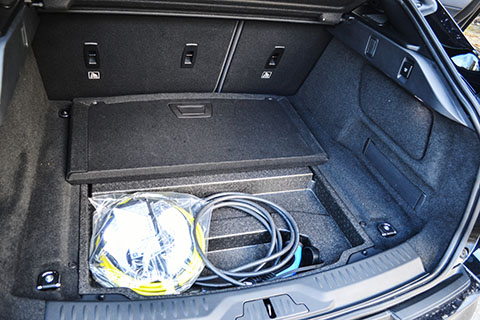
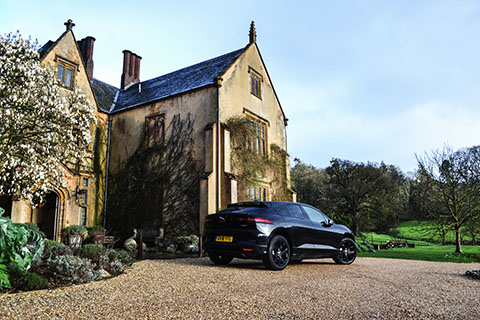
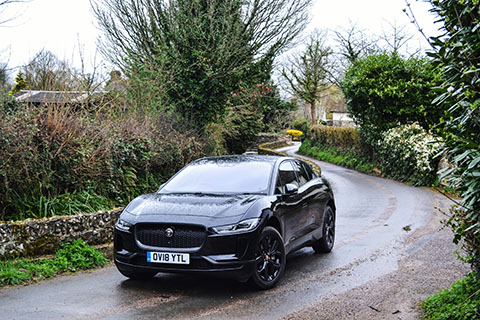
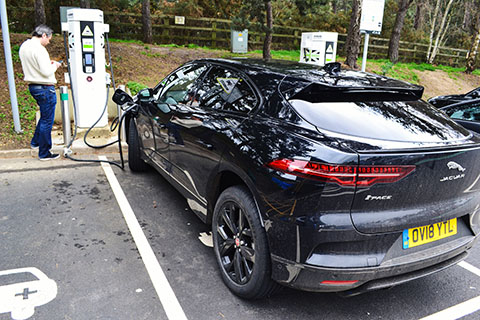
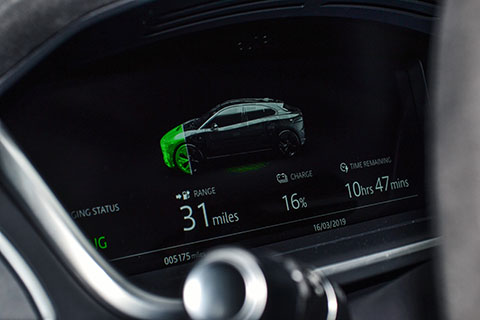
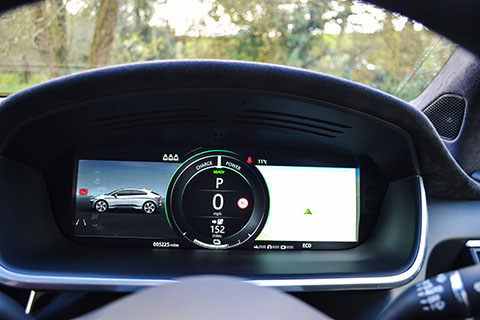
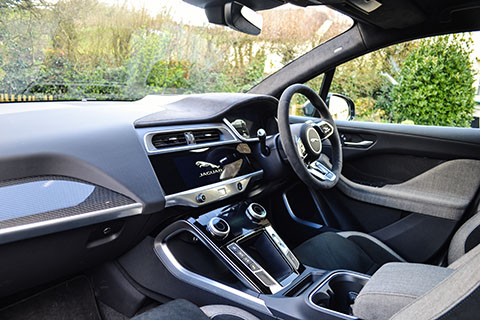
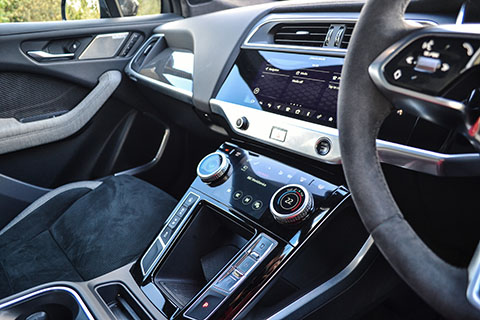
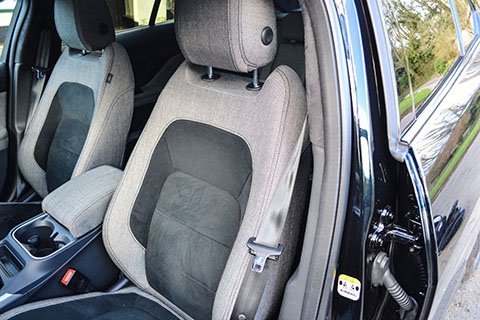
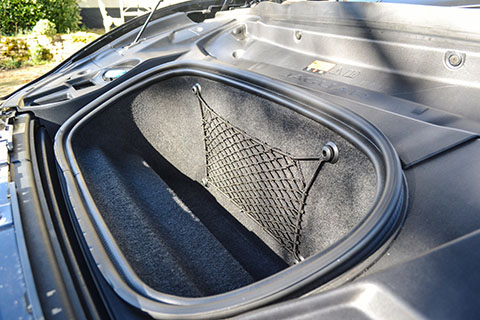

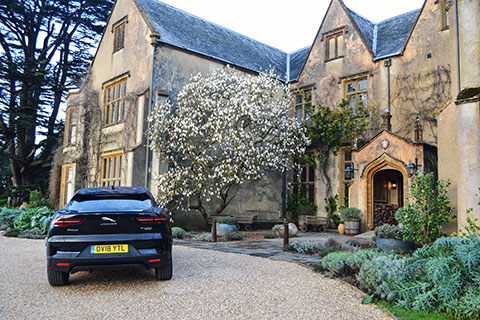
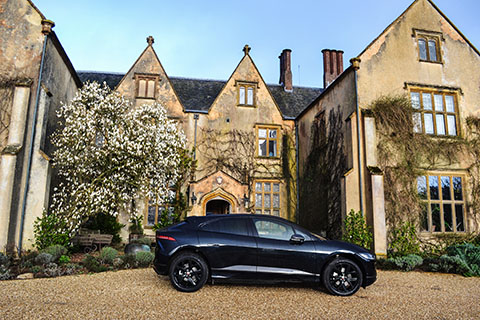
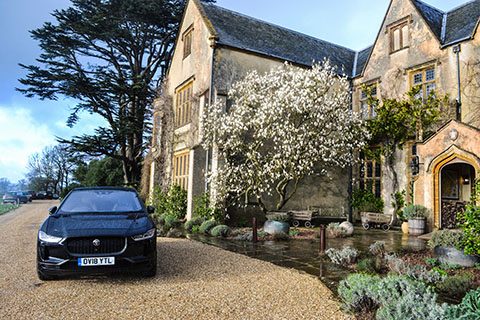
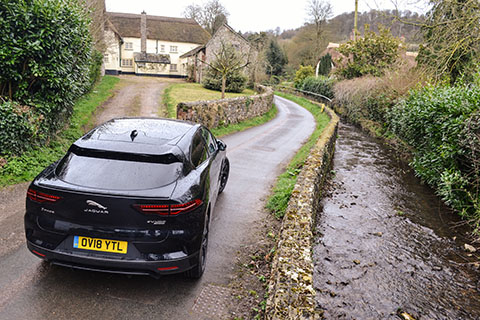

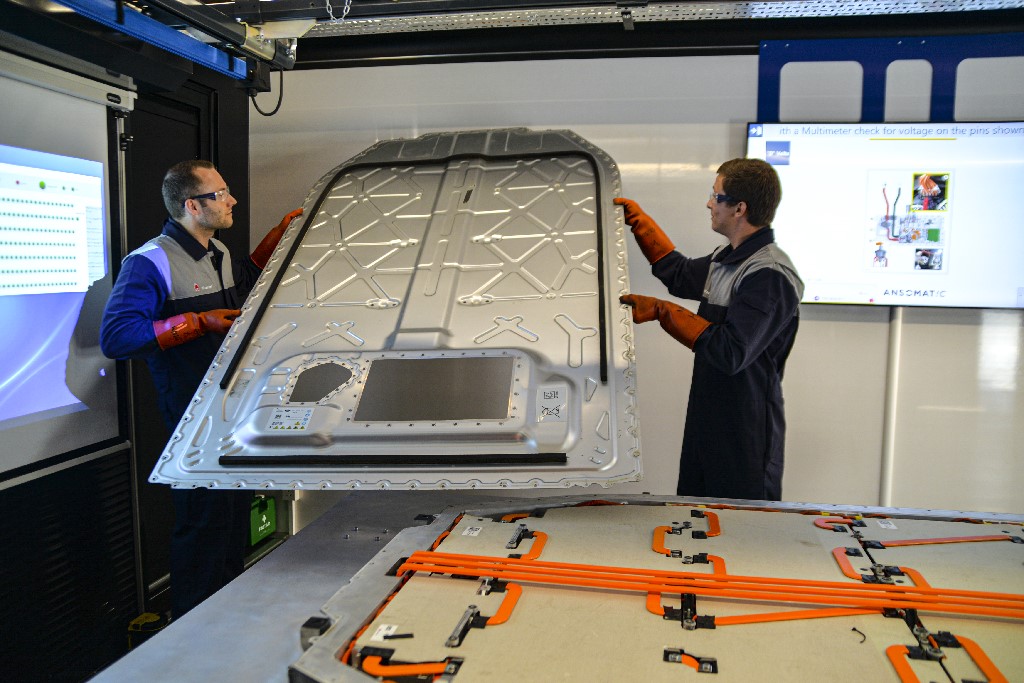
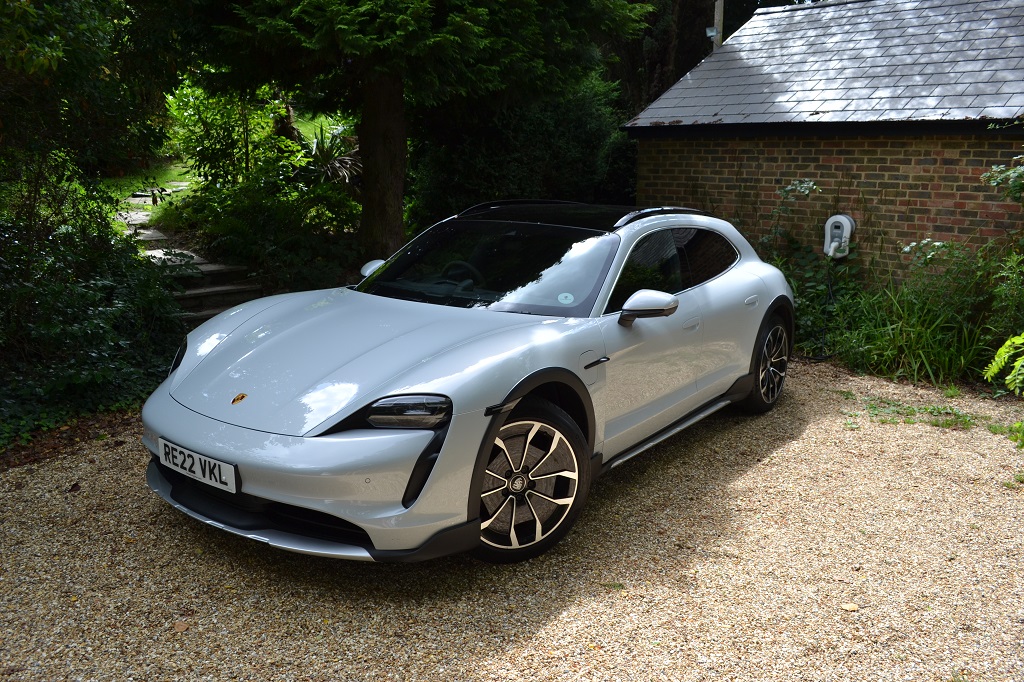
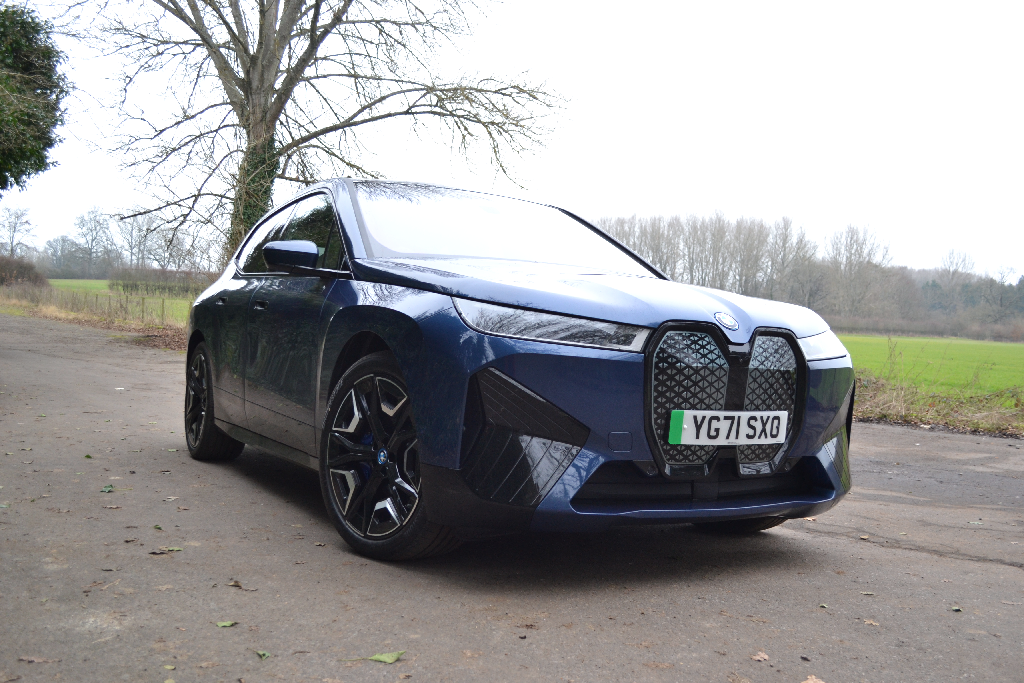
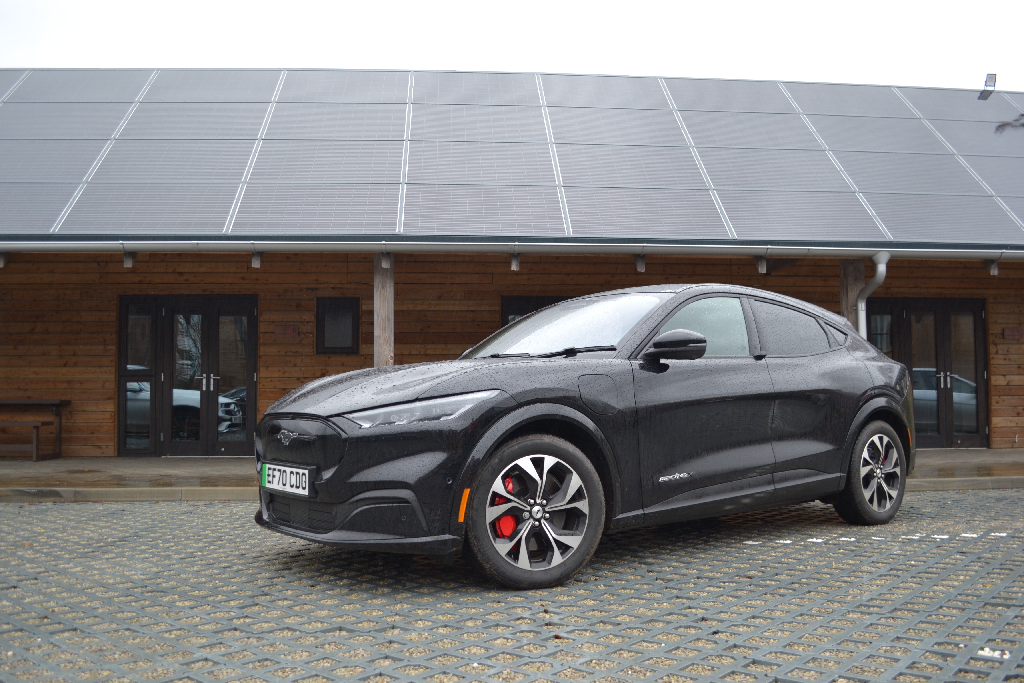
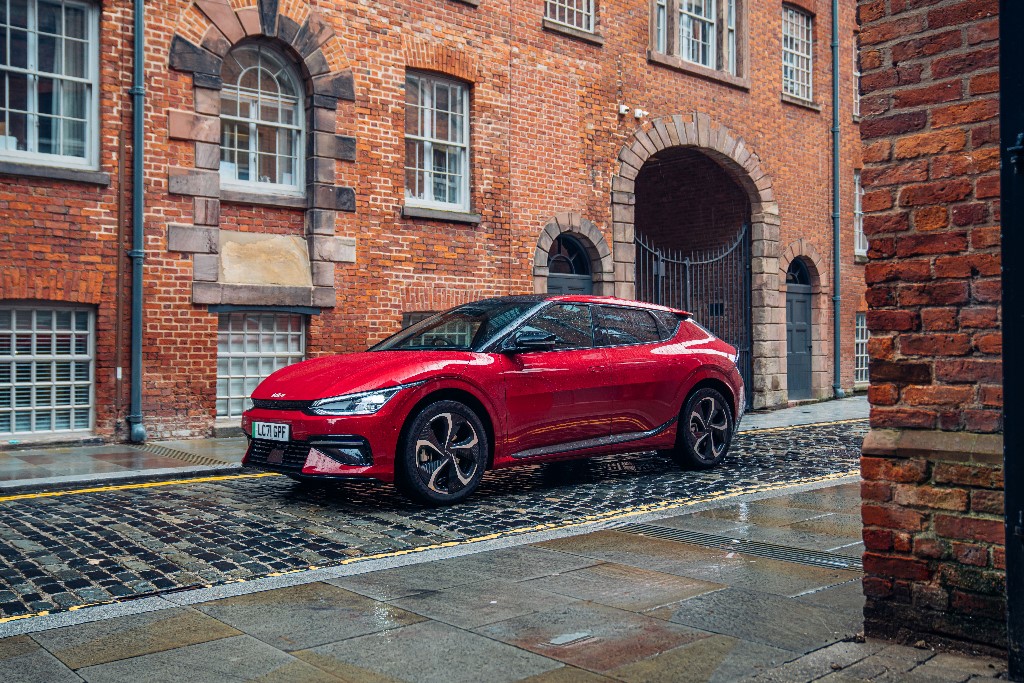
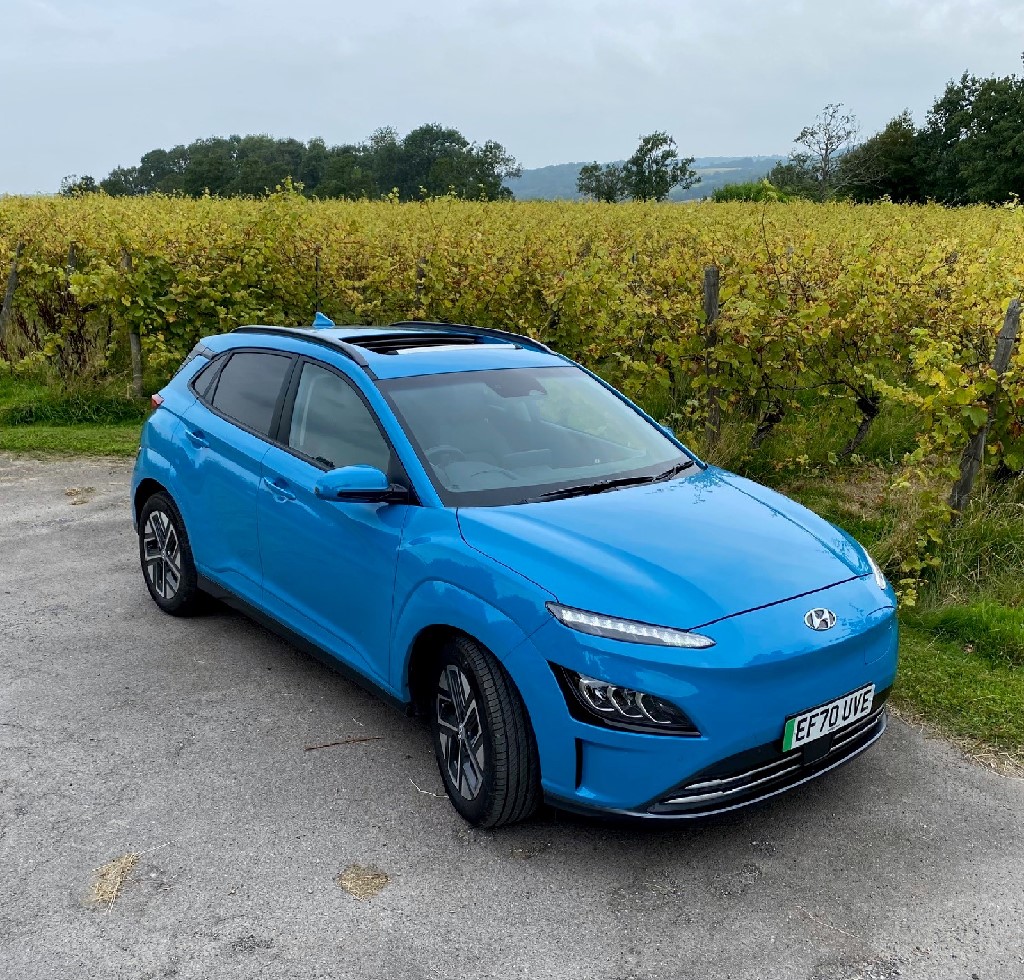

Comments (0)
Be the first to write a comment
Login/ Signup